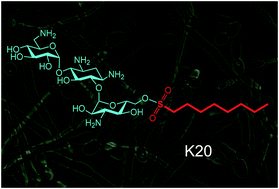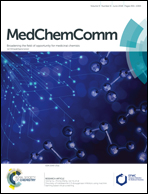Antifungal amphiphilic kanamycins: new life for an old drug
Abstract
Classical aminoglycoside antibiotics are obsolete or hampered by the emergence of drug resistant bacteria. Recent discoveries of antifungal amphiphilic kanamycins offer new strategies for reviving and repurposing these old drugs. A simple structural modification turns the clinically obsolete antibacterial kanamycin into an antifungal agent. Structure–activity relationship studies have led to the production of K20, an antifungal kanamycin that can be mass-produced for uses in agriculture as well as in animals. This review delineates the path to the discovery of K20 and other related antifungal amphiphilic kanamycins, determination of its mode of action, and findings in greenhouse and field trials with K20 that could lead to crop disease protection strategies.



 Please wait while we load your content...
Please wait while we load your content...